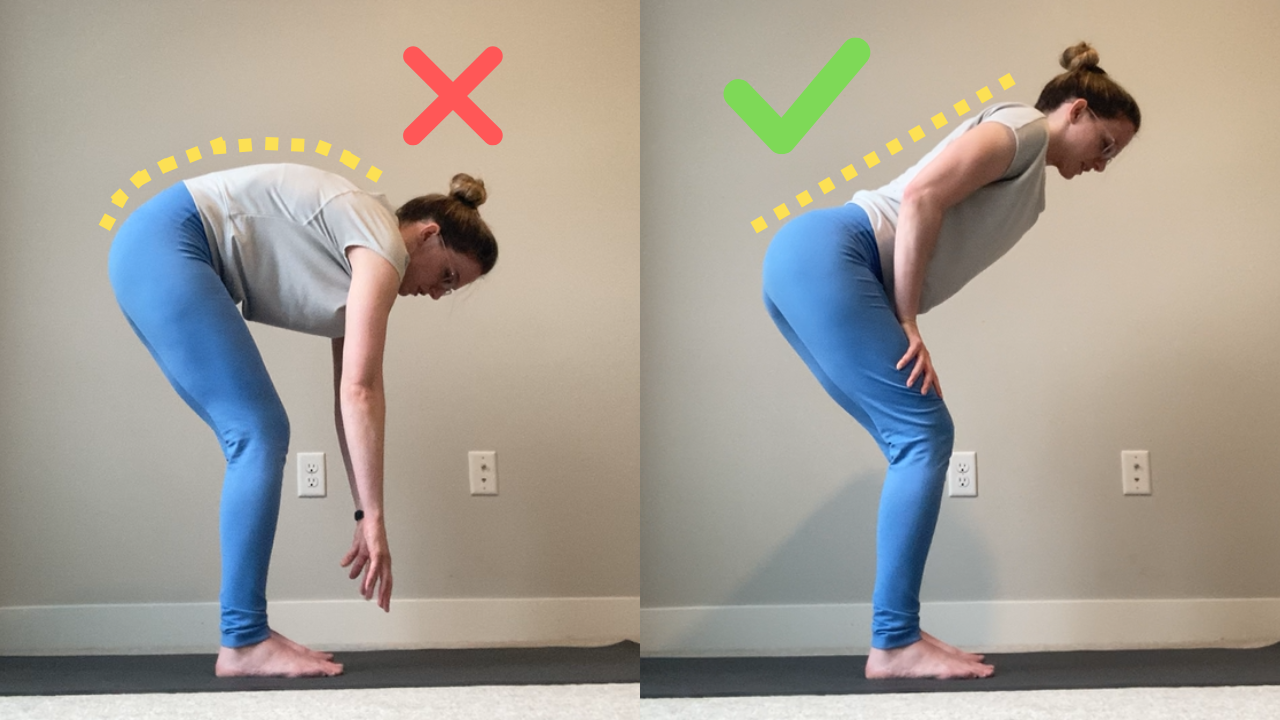Forward Fold
Forward Fold
Muscle Group Stretched: Hamstrings
Muscle Group Strengthened: n/a
Type of Stretch: Static Passive
Difficulty: All Levels
Suggested Prerequisites: none
The classic forward fold (aka standing pike) is generally the stretch people think of when they think of touching their toes. Because the goal of this stretch is to stretch the hamstrings, it’s important to perform this stretch with a flat back. Often beginners or folks with tighter hips will round their back as they lean forwards in an attempt to reach farther - but this turns the stretch more into a back stretch, and less of a hip stretch. So if your goal is to stretch your hamstrings, keep that back flat!
This is a great video that illustrates the difference between a rounded vs. flat back forward fold.
How To
Step 1
Start standing with your feet hip width apart. If you’re on the more flexible end of the spectrum, keep your knees straight, but if you’ve got tighter hips go ahead and bend your knees (bending your knees will make this stretch a bit easier)
Step 2
Keeping your back flat, hinge at the hips to forward fold. Your pelvis (hip bones) should rotate forwards/down towards the floor, and your tailbone should lift as you hinge. Only lean as far as you can while maintaining your flat back posture (even if that’s nowhere near a 90 degree lean). It’s OK if your knees are a bit bent. You should be feeling the stretch in the back of your thighs (hamstrings).
Conversely, if you have a lot of hamstring flexibility and can bring your hands to the floor while maintaining a flat back - go for it! This is a stretch that will look vastly different on different bodies, depending on flexiblity.
Hold for 20-60 seconds.
Modifications
Need to make it easier?
Bend your knees. I mentioned this one already because it’s such a helpful adjustment for people with tighter hamstrings!
Place your hands on your thighs for support. When we lean forwards, our hamstrings are getting stretched, but they’re technically also contracting a little to keep us from falling on our face. Bracing your hands against your thighs helps support the weight of your upper body, making it gentler on the hamstrings.
Want to make it harder?
Straighten your knees.
Reach your arms out to the side, or overhead. This will make the “lever arm” of your torso longer/heavier, which can add more force to the hamstring stretch
Turn it into an active drill, like good mornings.
Related Content
Flexopedia: Ragdoll Forward Fold
FLexopedia: Legs Up the Wall
Blog Post: Why Are My Hamstrings Tight? (and How to Fix Them)
Blog Post: Can't Touch Your Toes? 8 Hamstring Stretches for Beginners
Blog Post: How to Tell if Hamstring “Tightness” is Nerve or Muscle Tension

